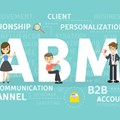Millennials and Gen Zs, born in the digital age, view technology as their natural domain. They perceive smartphones as potent tools, user-friendly, and instrumental in achieving their life goals. Understanding their desires is key, and marketers need to navigate their minds and digital devices adeptly to ensure visibility and successful promotion of products, brands, and services.
According to the Pew Research Center, millennials were born between 1981 and 1996, while those in Gen Z were born between 1997 and 2012. In 2024, millennials are between 28 and 43 years old, while Gen Zs are between 11 and 27.
New and updated
Millennials are more likely to be found on Facebook, LinkedIn, and X while Gen Zs prefer the fast-paced video formats of TikTok and YouTube. This is good to keep in mind when considering marketing to them.
Both these generations want new and updated technologies that enhance their lives by providing convenience, entertainment, and facilitating connections with what matters to them.
While these generations have a different approach to life and their careers, they have similar consumer qualities. As digital natives, they are naturally inclined to engage in online shopping and they prefer brands with a strong online presence. In most cases, their first contact with a brand will be online. They expect a brand’s talk to be backed up by effective online systems that make purchasing and exchanging products easy.
As consumers, they are discerning: they seek brands, products or services that enhance their lifestyle, and they often value experiences over material possessions, shaping their purchasing behaviour.
Authenticity is key
These two generations don’t fall for the fake, the BS. They can spot inauthenticity from miles away, and they are not shy to expose a dodgy brand using their online connections and digital savvy.
Good content should not be a sales pitch; it should rather feel like a conversation. Most importantly, good content needs to be authentic.
In a nutshell, this is how to connect with millennials and Gen Zs:
- Your content must be digital first (i.e. designed first for the digital experience, not just copied from old print material) – and must work properly. Millennials expect a seamless user experience
- Make sure your content is mobile-friendly – these generations are never far from their smartphones
- Millennials and Gen Zs are active and very effective communicators on social media, so use these platforms to talk to them (not at them)
- Both generations have heart and align themselves with social causes. Concepts such as sustainability, ethical practice and social justice strike a chord with them, as will aligning your brand with social responsibility initiatives
- To tap into their experiences-over-possessions ethic, create opportunities where they can engage directly
- They want personalised experiences, so tailor your marketing efforts to include opportunities for this
- Video content is king, so be sure to provide this
- They want honesty. And they want to be entertained
- They respond to high-quality, clever visuals and simple but effective messages that are backed up by brand responsiveness and online effectiveness
- Above all, millennials and Gen Zs appreciate authenticity and gravitate towards brands that display this
Think of campaigns such as Dove’s “Real Beauty” campaign, which promoted body positivity and self-acceptance by using real women of different ethnicities and body sizes to challenge industry beauty standards – this is the sort of campaign these generations respond well to.
Another is Coca-Cola’s hugely popular Share a Coke campaign, where the brand swapped out its logo, replaced it with names and popular phrases, and encouraged people to share their personalised bottles on social media.
Other examples include Nike’s Dream Crazy, Spotify’s Wrapped and Bumble’s The Ball is in Her Court campaigns. Tap into these campaigns’ winning formulas by doing the required research, and you just might have a successful campaign.
If brands are to succeed at winning over millennials and Gen Zs and getting them to spend their plastic money and bitcoins, they need to be clever and agile. They need to invest time and money into not only understanding how this massive consumer segment thinks and behaves currently, but also into anticipating how they will evolve and how their spending behaviour will change.
A checklist for quality content when marketing to millennials and Gen Zs
At Flow Communications, being future-facing and agile means gaining crucial insights into the behaviour patterns of the world's major consumers and digital influencers.
We understand that millennials, followed by Gen Zs, have been a driving force in changing what consumers want from marketing.
They want online marketing that is real, relevant, engaging and helpful. They want content that speaks to them as individuals, that entertains them and makes their lives easier.
The following insights are derived from Flow's marketing successes with these segments.
In the digital realm, millennials and Gen Zs want content that:
- Is smartphone-friendly
- Is relevant to their lives
- Is entertaining
- Is engaging and interactive
- Educates
- Shows them that you understand their struggles and challenges and that you care enough to try to make things better
- Uses humour and storytelling
- Is personalised and makes them feel as if it was made just for them
- Is concise and captures shorter attention spans
- Has a social conscience – is environmentally/socially responsible or stands for a cause
- Shows diversity and inclusivity
One thing is certain: brands that succeed in effectively engaging with these generations can position themselves for long-term success.











































